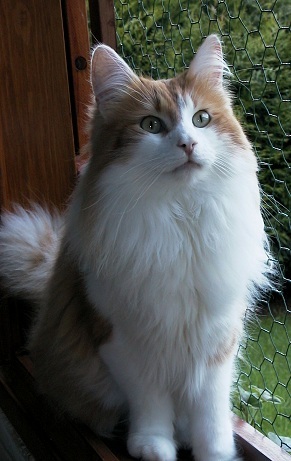My breeding
|
In June 1994 I had my first Turkish angora. She was a white cat with blue eyes. I had been waiting quite a while for her so I was overjoyed. Then, very quickly my joy turned into anguish. The cat was ill with a cold, ear-mange, ringworm, important skin problems, then pneumonia. Iíll spare you all the details. To end the story it took a year for this little cat to recuperate. Oh, before I forget, she was deaf too ! My intention had been for her to have one litter then to get her sterilised, but to get the litter, I had to get a male and since I didnít want to go back to where I got my female cat, I decided to buy one. I found one in Belgium in 1994 through a young serious breeder, who had a small breeding cattery and she sold me a superb male, a red mackerel tabby and white (Leo) and at the same time I bought a little white female with amber eyes because Leo and her were unseparatable. |
|
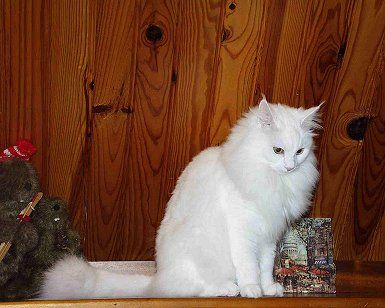 LAURINE |
From that time on (1995) I started thinking about having my own breeding cattery, so as to get people to know and appreciate this race of cats and to sell kittens. So on July 19th 1996, Lťo and Laurine had their first litter made up of 2 females and a male, all of them white with amber eyes. The kittens were superb I was told because quite honestly I didnít know much about them at the time. When the kittens were 3 months old, I took them to an exibition to try and sell them. I couldnít have been very convincing, because I didnít manage to sell one. The judges admired them, and one was particularly noticed. When they were 5 months old I still had them, so I decided to keep the male (Mermoz) because all of the judges advised me not to sell him. So thatís how I found myself owner of 4 Turkish angoras. In 1998, I bought another female in Belgium with blue eyes (Maurine), sheís not deaf ! |
|
My intention is to keep a family breeding cattery and to have 2 or 3 litters a year. It seems quite enough. In my opinion quality and quantity
donít go well together. Naturally the door of my cattery is wide open to those who would like to visit it. |
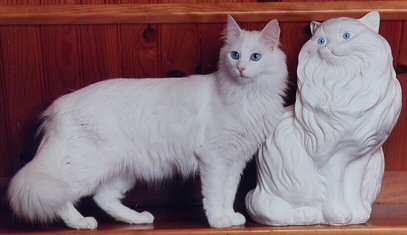 MAURINE |
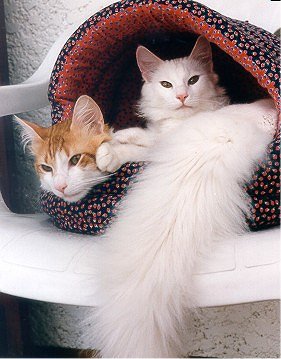 LEO ET MERMOZ |
All my cats live in our home. The females are on the first floor. They have 70m≤ at their disposition. They have cat trees for her but she spend time on my childrenís bed, even under the quilts when itís chilly. Hamacks are used to hanging on the radiators. In spite of their long fur I wonder if Turkish angora donít fell the cold a bit, because they always get as near to sources of heat. For Leo, our first male, we built a cattery of 25 m² attached to our house because he marked his territory a lot. Today, in the cattery lives either a group of females or only a male when he begins marking his territory while living with us in the house. When there is no male around who is marking his territory, the cattery is home to all cats, females and males. They love to be there because it gives them the impression of being in the garden. We never know, a bird might get close enough, and maybe... |
|
The cats are very comfortable. Everything has been well thought of: cat trees, hammacks, shelves under the window to have a view of what goes on in the garden while staying warm in the winter. There is also an area overlooking the garden that is protected from the rain and closed by a netting.
|
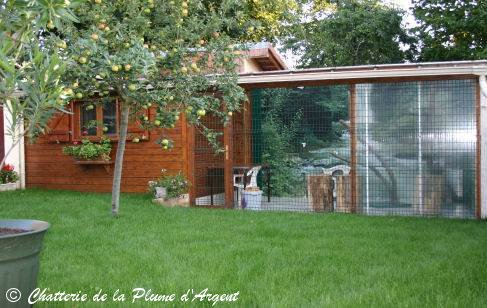 The cattery is next to the home |
HOME
Copyright © 2001-2013 La Plume d'Argent
